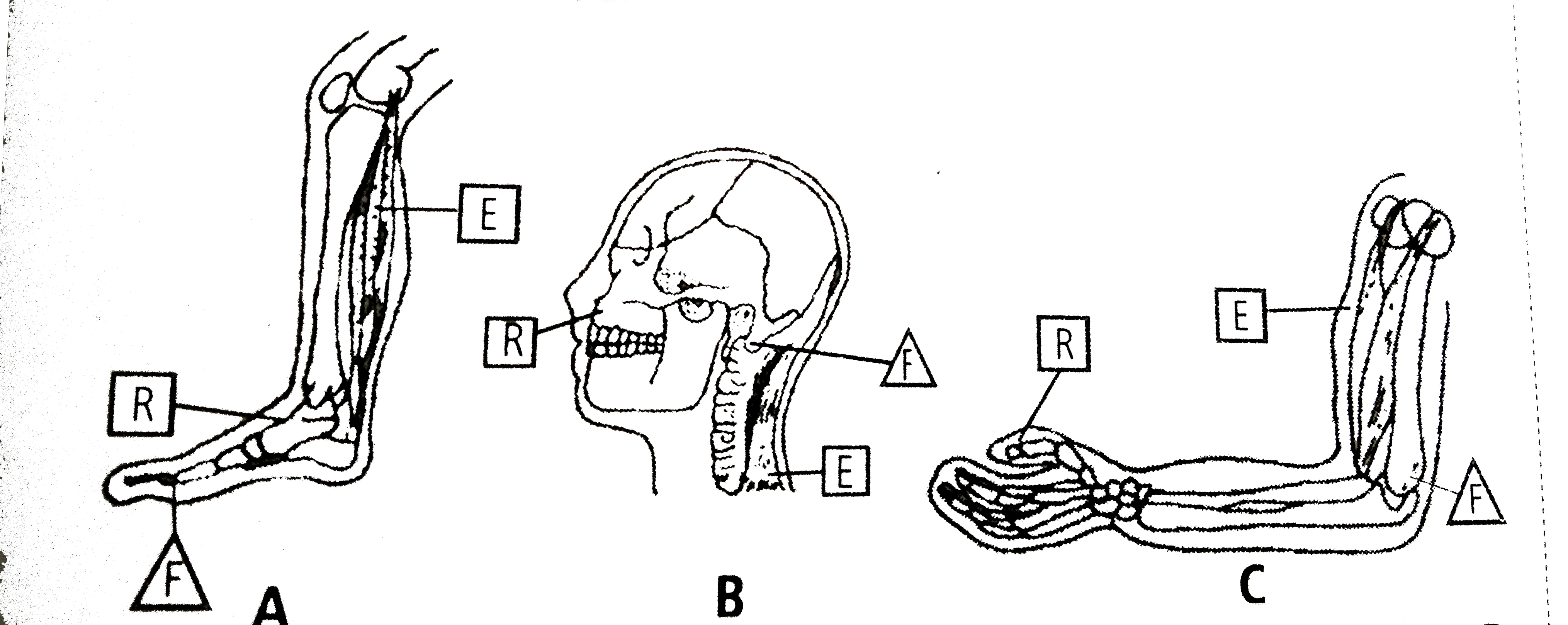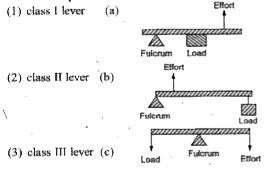To use a machine as a force multiplier what class of lever should be preferred? Draw a sketch of such a lever.
To determine which class of lever should be preferred to use a machine as a force multiplier, we can follow these steps:
1. Understand the Concept of Levers: A lever is a simple machine that consists of a rigid bar that pivots around a fixed point called the fulcrum. There are three classes of levers based on the relative positions of the load, effort, and fulcrum.
2. Identify the Classes of Levers:
- Class 1 Lever: The fulcrum is between the effort and the load (e.g., seesaw).
- Class 2 Lever: The load is between the effort and the fulcrum (e.g., wheelbarrow).
- Class 3 Lever: The effort is between the load and the fulcrum (e.g., tweezers).
3. Determine the Class for Force Multiplication:
- For a lever to act as a force multiplier, the effort arm (distance from the fulcrum to the point where effort is applied) must be longer than the load arm (distance from the fulcrum to the load).
- This condition is satisfied in a Class 2 Lever, where the load is positioned between the effort and the fulcrum.
4. Draw the Sketch:
- In a Class 2 lever, the fulcrum is at one end, the load is in the middle, and the effort is applied at the other end.
- Here’s a simple sketch:
Effort(E)−−−−→⊢−−Load(L)−−−−→⊢−−Fc–rum(F)
- In this diagram, the arrow represents the direction of the applied effort, and the positions of the load and fulcrum are indicated.
Final Answer:
To use a machine as a force multiplier, a Class 2 lever should be preferred.
Sketch:
Effort(E)−−−−→⊢−−Load(L)−−−−→⊢−−Fc–rum(F)
- Class 1 Lever: The fulcrum is between the effort and the load (e.g., seesaw).
- Class 2 Lever: The load is between the effort and the fulcrum (e.g., wheelbarrow).
- Class 3 Lever: The effort is between the load and the fulcrum (e.g., tweezers).
- For a lever to act as a force multiplier, the effort arm (distance from the fulcrum to the point where effort is applied) must be longer than the load arm (distance from the fulcrum to the load).
- This condition is satisfied in a Class 2 Lever, where the load is positioned between the effort and the fulcrum.
- In a Class 2 lever, the fulcrum is at one end, the load is in the middle, and the effort is applied at the other end.
- Here’s a simple sketch:
Effort(E)−−−−→⊢−−Load(L)−−−−→⊢−−Fc–rum(F)
To use a machine as a force multiplier, a Class 2 lever should be preferred.
Effort(E)−−−−→⊢−−Load(L)−−−−→⊢−−Fc–rum(F)
Similar Questions
Knowledge Check
While teaching in lower classes, a teacher should prefer
Alecture methodBassignmentCstory tellingDgroup discussionClass I lever is that in which
Afulcrum is between the load and effortBload is between the fulcrum and effortCeffort is between the load and fulcrumDfulcrum, load and effort at one pointRefer to the figures, (A, B and C) and arrange them in an order of list class lever, second class lever and third class lever.
 AB,A,CBC,A,BCC,B,ADA,C,B
AB,A,CBC,A,BCC,B,ADA,C,B
Manu, a Chief Manager in a company using highly sophisticated machines and equipments, wants that every employee should be fully trained before using the machines and equipment. Suggest the best method of training that Manu can use for training of the employees.
View SolutionA pair of scissors and a pair of pliers both belong to the same class of levers.
Name the class of lever
View SolutionAnswer true or false.
A bottle opener is an example of second class lever.
View SolutionBy what least number should 1536 be multiplied to get a perfect cube?
View SolutionBy what least number should 9720 be multiplied to get a perfect cube?
View Solution

